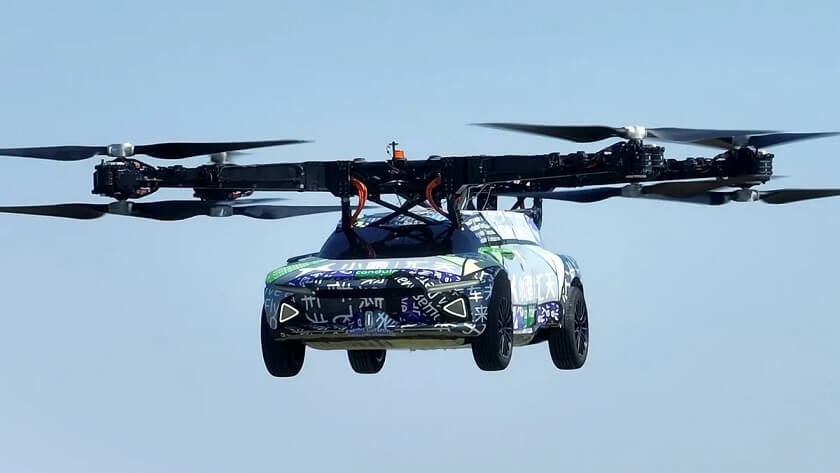
The World’s First Fully Electric Vertical Take-Off And Landing Flying Car Is Unveiled In China
It can be maneuvered quite easily while flying as it has full range of motion in the air.
XPENG AEROHT, the largest flying car company in Asia, released the latest version of the world’s first fully electric vertical take-off and landing (eVTOL) flying car last week in China, according to a press release by the company.
Designed For both Flying and Driving
“Designed for both air flight and road driving, the flying car conveniently features a sleek rotor fold-away system for seamless conversation between driving and flying. It is equipped with a new flight control system equipped with fault-tolerant control functions and a dual-engine backup system to ensure safety,” said the statement.
The model is similar to the company’s previous horizontal dual-rotor version but has been optimized to be equipped with a new distributed multi-rotor configuration. To further enhance flight safety and reliability, the overall system design complexity has also been reduced.
So far this new test vehicle has successfully completed its maiden flight as well as multiple single-motor failure tests.
When being driven, the eVTOL functions like any conventional car. However, in flight mode, the prototype is piloted using the steering wheel and the right-hand gear lever.
It has full range of motion as its controls can be used to move forward and backward, make turns, ascend, hover and descend. As long as laws and regulations will allow it, it can take off and land vertically, and fly over traffic congestion, obstacles and rivers in short distances.
eVTOLs In Development
The eVTOL industry has seen quite some strides and developments in just the last few months. In September of 2022, pre-orders for the Axe, a two-seat personal eVTOL aircraft from London-based start-up SkyFly, opened.
The Axe was expected to start customer deliveries in 2024 and had high speeds of 100 mph (160 kph), a range of up to 200 miles (320 km), and a winged airframe. The craft featured 16.4-feet (5-meter) long wings that tilted upward when the eVTOL was on the ground, giving it a unique appearance from other aircraft types.
Also in September, aerospace company Doroni, based in Miami, U.S., began to take pre-orders for its “personal” aircraft.
Doroni targeted a different market than most eVTOL producers, who are making air taxis for usage in cities. Instead, it aimed its aircraft at private pilots, claiming that it would be more intuitive and simpler to operate than a helicopter or regular airplane.
The same months saw the introduction of the MadBat eVTOL prototype by Romanian inventor and engineer Razvan Sabie who is most famously known for his 2019 flying saucer. The new model was designed to scale from small drones, to personal aircraft, to air taxis and much more. It can do all this through the use of a tail-sitter.
Finally, September also witnessed the VX4, the eVTOL aircraft from British aviation start-up Vertical Aerospace, completing its first take-off from the ground. Also referred to as “wheels up,” the milestone was a major boost for American Airlines, which has plans to incorporate 250 such aircraft into its fleet when they are available.
